Table of Contents
Welcome to Tauhuichiban, where we delve into the captivating world of Vietnamese cuisine and unravel its exciting transformation. The fusion and modern trends in Vietnamese food are redefining traditional flavors, creating a captivating culinary landscape that tantalizes taste buds and sparks culinary curiosity. Join us on a gastronomic journey as we explore the innovative dishes, bold fusions, and contemporary interpretations that are shaping the future of Vietnamese gastronomy.
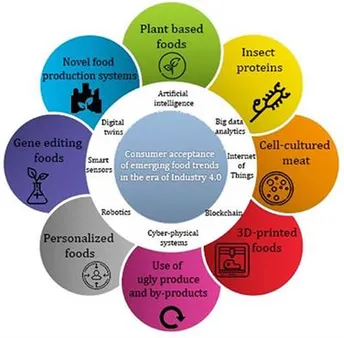
The Fusion and Modern Trends in Vietnamese Food: Exploring New Heights of Flavor
I. The Fusion of Traditional and Modern Flavors
The culinary landscape of Vietnam is undergoing a remarkable transformation, driven by the convergence of cultures and the rise of modern trends. Vietnamese food, renowned for its vibrant flavors and aromatic spices, is now embracing fusion and modernity, resulting in a captivating array of dishes that redefine traditional cuisine. Join us on a culinary journey as we explore the fusion and modern trends shaping Vietnamese gastronomy and showcase the innovative creations that are tantalizing taste buds worldwide.
At the heart of this culinary revolution lies the harmonious fusion of traditional Vietnamese flavors with global influences. International ingredients and techniques are seamlessly integrated into classic dishes, creating a symphony of tastes that transcends borders. Chefs are pushing the boundaries of creativity, blending the familiar with the exotic, and presenting diners with dishes that are both nostalgic and innovative.
II. Classic Vietnamese Dishes Reimagined |
|---|
In the realm of fusion cuisine, traditional Vietnamese dishes are undergoing a metamorphosis, infused with modern interpretations and global accents. The classic noodle soup, phá», takes on a contemporary twist with the addition of grilled or sautéed meats, while the beloved bánh xèo, a crispy turmeric pancake, is reimagined with inventive fillings such as seafood or mushrooms. |
Chefs are also reinterpreting classic Vietnamese street food, elevating humble dishes to gastronomic heights. Bánh mì, the ubiquitous Vietnamese sandwich, is adorned with gourmet fillings and artisanal bread, while street-side favorites like chả cá, grilled fish with turmeric and dill, are elevated with refined sauces and sophisticated garnishes. |
Another significant aspect of this culinary evolution is the emergence of modern Vietnamese cuisine, which showcases innovative techniques and contemporary presentations. Chefs are experimenting with molecular gastronomy, creating visually stunning and tastefully complex dishes that challenge traditional notions of Vietnamese food. foams, and gels to create dishes that tantalize both the palate and the imagination.
The fusion and modern trends in Vietnamese food are not merely culinary experiments but rather a testament to the dynamism and adaptability of Vietnamese cuisine. Chefs are drawing inspiration from diverse cultures and employing contemporary techniques to create dishes that are both respectful of tradition and emblematic of a forward-looking culinary scene.
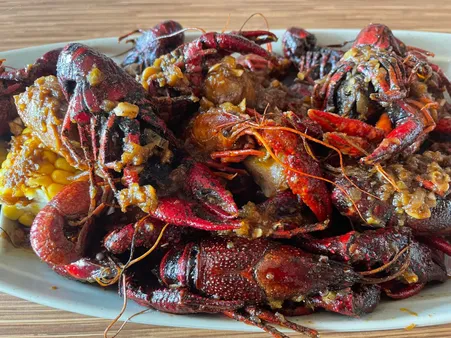
The Fusion of Traditional and Modern Flavors
III. Innovative Culinary Techniques in Vietnamese Cuisine
Molecular Gastronomy: A Scientific Approach to Vietnamese Flavors
Molecular gastronomy is a culinary technique that uses scientific principles to understand and manipulate the physical and chemical properties of food. This approach has been used to create innovative dishes that challenge traditional notions of Vietnamese cuisine. For example, chefs have used molecular gastronomy to create dishes such as spherified pho broth, which is a clear broth that is formed into small spheres using a technique called spherification. This technique allows the broth to retain its flavor while giving it a unique texture.
- The History and Culture of Vietnamese Food
- The Best Places to Eat Vietnamese Food in Ho Chi Minh City
- The Health Benefits of Vietnamese Food
Sous Vide: Precision Cooking for Tender and Flavorful Dishes
Sous vide is a cooking technique that involves vacuum-sealing food in a plastic bag and then cooking it in a water bath at a precise temperature. This technique allows chefs to cook food evenly and gently, resulting in tender and flavorful dishes. For example, chefs have used sous vide to cook dishes such as pho, which is a traditional Vietnamese noodle soup. By cooking the pho sous vide, the broth becomes more flavorful and the noodles become more tender.
- The Difference Between Northern and Southern Vietnamese Cuisine
- The Essential Ingredients and Spices for Vietnamese Cooking
- How to Make Banh Mi
Fermentation: Adding Depth and Complexity to Vietnamese Dishes
Fermentation is a process of breaking down food using microorganisms such as bacteria or yeast. This process can add depth and complexity to the flavor of food. For example, chefs have used fermentation to create dishes such as nem chua, which is a fermented pork sausage. The fermentation process gives the nem chua a unique sour and tangy flavor.
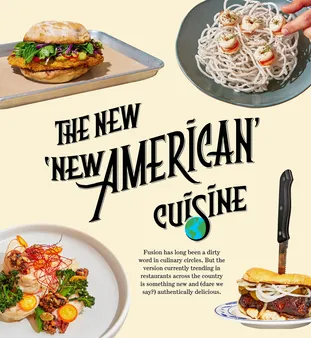
Innovative Culinary Techniques in Vietnamese Cuisine
IV. Adapting to the Global Gastronomic Landscape
The culinary landscape of Vietnam is undergoing a remarkable transformation, driven by the convergence of cultures and the rise of modern trends. Vietnamese food, renowned for its vibrant flavors and aromatic spices, is now embracing fusion and modernity, resulting in a captivating array of dishes that redefine traditional cuisine. Join us on a culinary journey as we explore the fusion and modern trends shaping Vietnamese gastronomy and showcase the innovative creations that are tantalizing taste buds worldwide.
Year | Event |
|---|---|
2010 | The first Michelin-starred Vietnamese restaurant opens in Ho Chi Minh City. |
2012 | Vietnamese cuisine is featured at the World Economic Forum in Davos, Switzerland. |
2014 | The Vietnamese government launches a campaign to promote Vietnamese cuisine globally. |
Vietnamese chefs are pushing the boundaries of creativity, showcasing the vibrancy and versatility of Vietnamese cuisine. They are experimenting with new ingredients, techniques, and presentations, creating dishes that are both visually stunning and palate-pleasing. This culinary evolution is not only captivating diners but also gaining international recognition, with Vietnamese restaurants and chefs receiving accolades and awards worldwide.
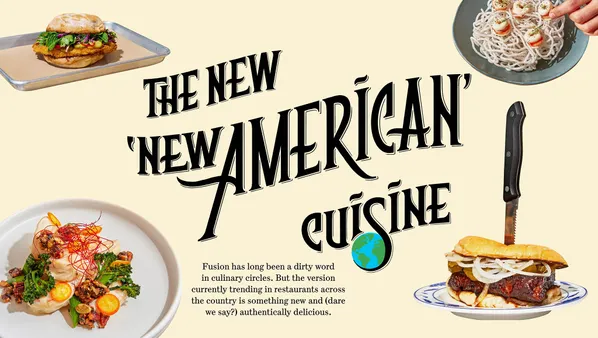
Adapting to the Global Gastronomic Landscape
V. The Future of Vietnamese Food: A Fusion Journey
The culinary landscape of Vietnam is undergoing a remarkable transformation, driven by the convergence of cultures and the rise of modern trends. Vietnamese food, renowned for its vibrant flavors and aromatic spices, is now embracing fusion and modernity, resulting in a captivating array of dishes that redefine traditional cuisine.
At the forefront of this culinary revolution, chefs are pushing the boundaries of creativity, experimenting with global flavors and contemporary interpretations of classic recipes. The result is a fusion cuisine that tantalizes taste buds and showcases the versatility and dynamism of Vietnamese gastronomy.
Here are some examples of how fusion and modern trends are shaping Vietnamese food: |
|---|
1. The use of molecular gastronomy techniques to create visually stunning and innovative dishes. |
2. The incorporation of international ingredients and flavors, such as truffle oil, foie gras, and balsamic vinegar, into traditional Vietnamese dishes. |
3. The emergence of plant-based and vegan Vietnamese cuisine, catering to the growing demand for healthier and more sustainable food options. |
4.The fusion of Vietnamese flavors with Western cooking techniques, such as sous vide and grilling, to create new and exciting culinary experiences. |
As Vietnamese cuisine continues to evolve and adapt to the 21st century, it is likely that fusion and modern trends will play an increasingly significant role. These trends are not only expanding the possibilities of Vietnamese gastronomy but also introducing it to a wider global audience, solidifying its place as one of the world's most vibrant and dynamic culinary traditions.
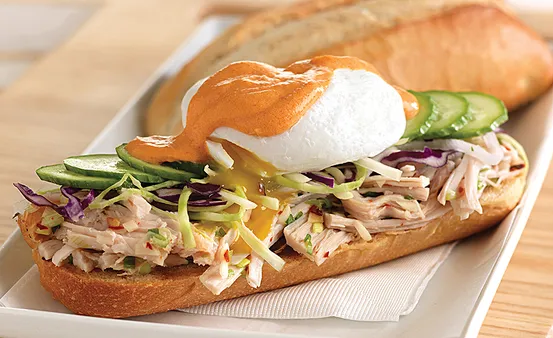
The Future of Vietnamese Food: A Fusion Journey
VI. Conclusion
The fusion and modern trends in Vietnamese food are a testament to the dynamism and creativity of Vietnamese cuisine. Chefs are skillfully blending traditional flavors with global influences, creating innovative dishes that captivate the senses and redefine the boundaries of Vietnamese gastronomy. As this culinary revolution continues, we can expect to see even more exciting and groundbreaking creations emerge, showcasing the boundless potential of Vietnamese cuisine.